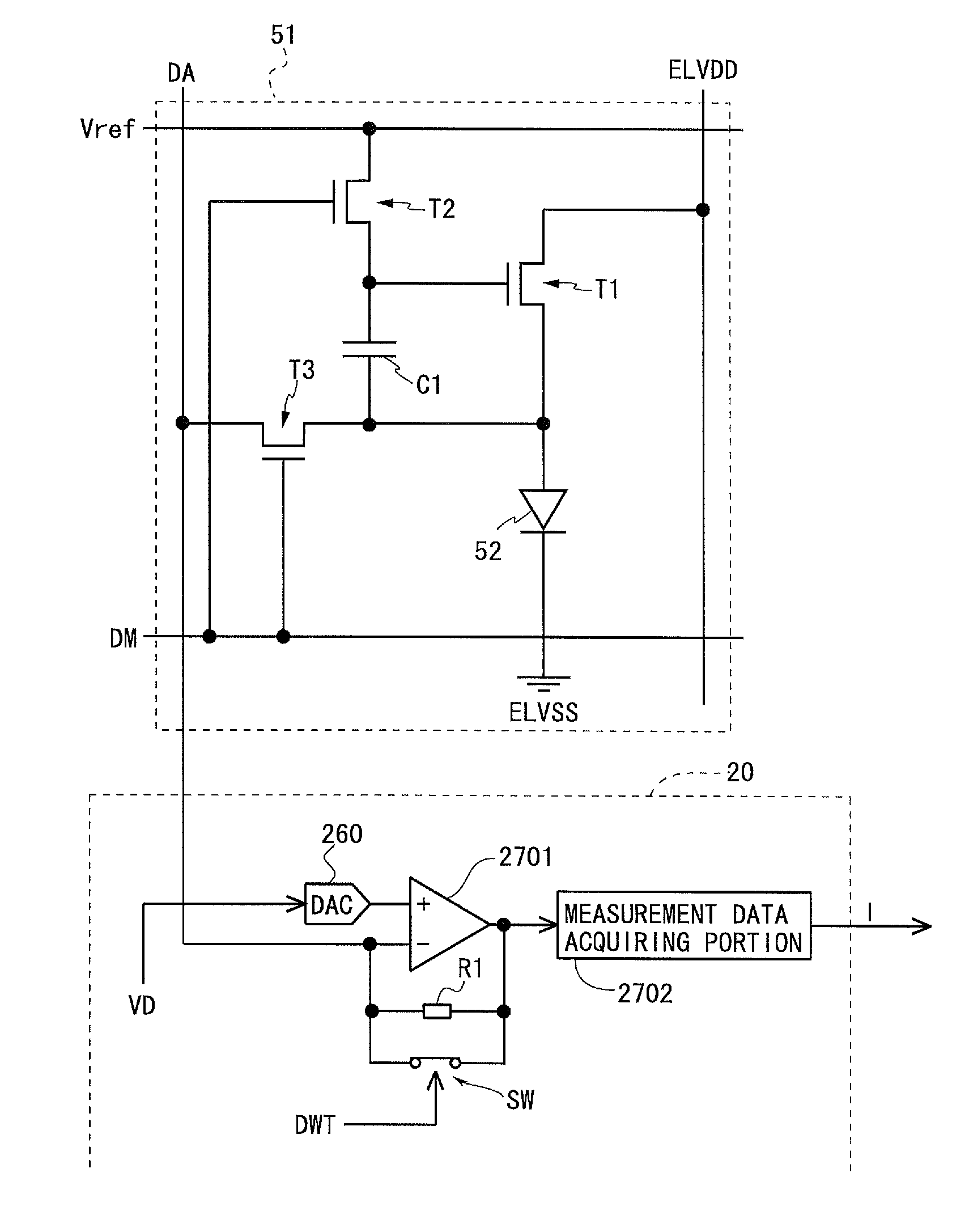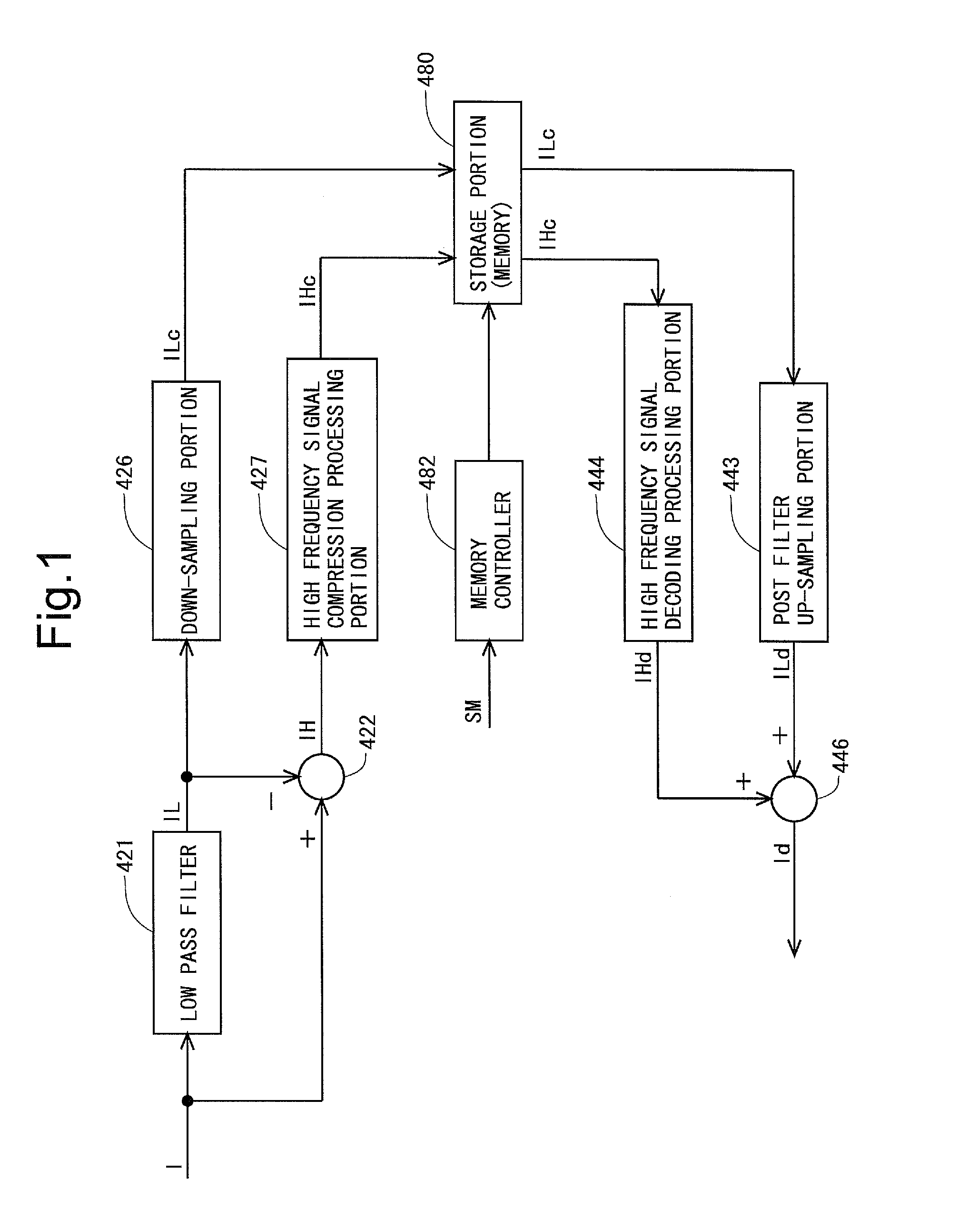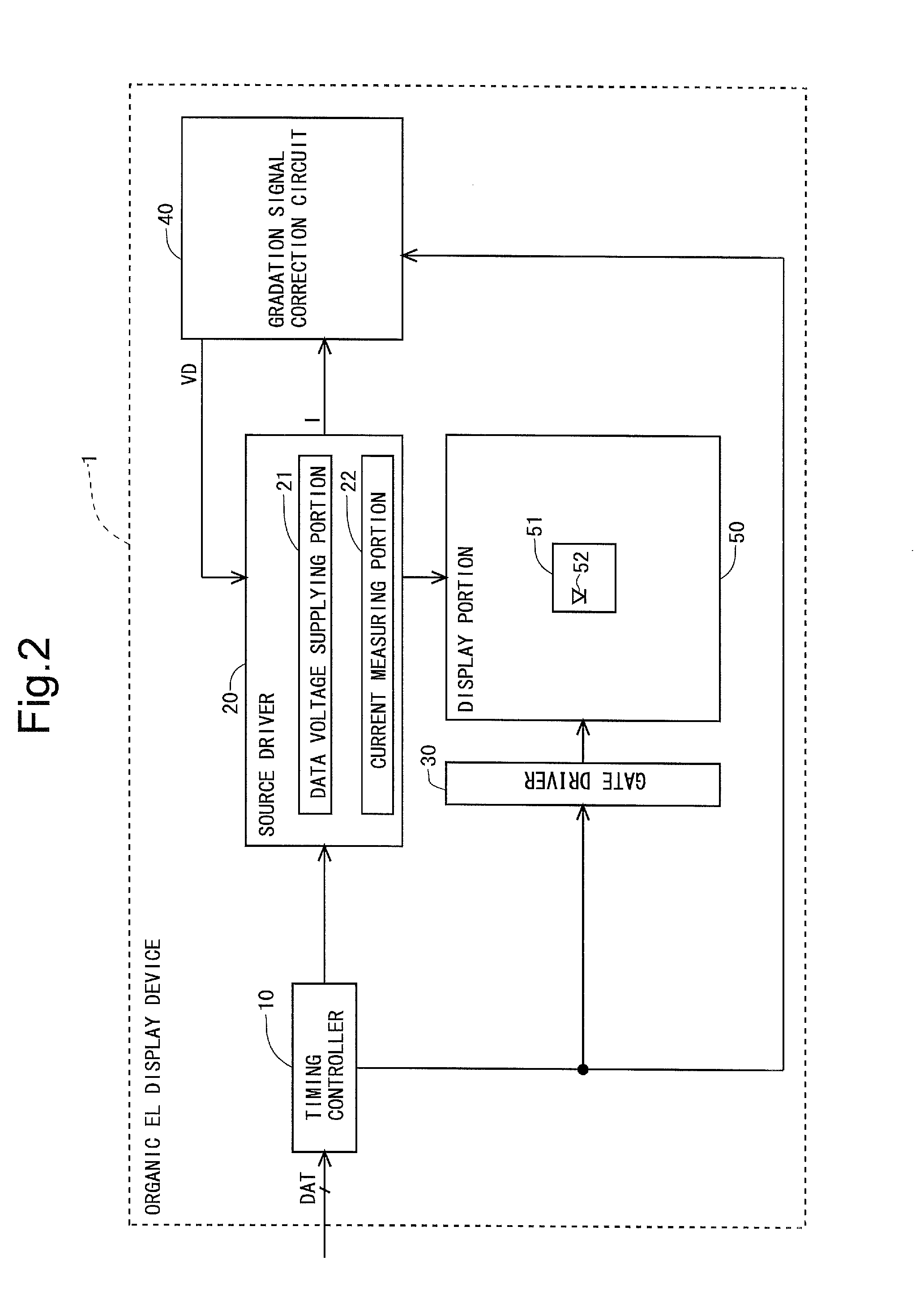Display device, and data processing method in display device
a display device and data processing technology, applied in static indicating devices, instruments, electroluminescent light sources, etc., can solve the problems of deterioration of light emission luminance from an initial state, difficult to achieve large size and high definition, etc., to reduce the amount of current data, reduce the amount of high frequency component data and an amount of low frequency component data
- Summary
- Abstract
- Description
- Claims
- Application Information
AI Technical Summary
Benefits of technology
Problems solved by technology
Method used
Image
Examples
first embodiment
1. First Embodiment
1.1 Whole Configuration
[0133]FIG. 2 is a block diagram showing a whole configuration of an active matrix type organic EL display device 1 according to a first embodiment of the present invention. This organic EL display device 1 includes a timing controller 10, a source driver 20, a gate driver 30, a gradation signal correction circuit 40, and a display portion 50. The source driver 20 includes a data voltage supplying portion 21 and a current measuring portion 22. It should be noted that either the source driver 20 or the gate driver 30, or both of them, may be configured to be integrally formed with the display portion 50. The display portion 50 is formed with a plurality of pixel circuits 51 including an OLED 52 as an electric optical element. A detailed configuration of the pixel circuit 51 will be described later. It should be noted that FIG. 2 shows only one pixel circuit 51.
[0134]FIG. 3 is a block diagram for describing a configuration of the display portio...
second embodiment
2. Second Embodiment
[0221]Hereinafter, only a matter different from the first embodiment will be described, and a description of a similar matter to the first embodiment will be omitted. It should be noted that, in the present embodiment and a third embodiment described later, with regard to a display device having 1920×1080 pixels, the storage portion for high frequency component data after compression out of the prepared storage portion (memory) 480 is assumed to be 2M bits, for the sake of simplifying the description. In addition, each pixel data is assumed to be 6 bits. In this case, a data amount D1 of the pixel current data I before compression is as follows:
D1=6×1,920×1,080=12,441,600 bits (about 11.87 megabits)
[0222]Therefore, a compression ratio of about 17% has to be realized.
[0223]When the compression processing is performed while a compression parameter is controlled one row by one row, an average data amount D2 per row with respect to the pixel current data I after comp...
third embodiment
3. Third Embodiment
3.1 Compression Technique
[0235]In the present embodiment, a compression method for the high frequency component data IH is different from that in the first embodiment. Therefore, in the following, a description will be given of the compression method for the high frequency component data IH in the present embodiment (hereinafter referred to as “re-quantization technique”). In the re-quantization technique, multiplication of data (high frequency component data IH) and a predetermined coefficient is performed before re-quantization, and a value of the coefficient for the multiplication is set to the compression parameter P. As the value of the compression parameter P decreases, a value of data obtained by the multiplication approaches “0”, and a length of Huffman coding is shorter. Accordingly, the compression ratio increases, and the amount of the data after compression (compressed high frequency component data IHc) decreases. Hereinafter, this will be described in...
PUM
 Login to View More
Login to View More Abstract
Description
Claims
Application Information
 Login to View More
Login to View More - R&D
- Intellectual Property
- Life Sciences
- Materials
- Tech Scout
- Unparalleled Data Quality
- Higher Quality Content
- 60% Fewer Hallucinations
Browse by: Latest US Patents, China's latest patents, Technical Efficacy Thesaurus, Application Domain, Technology Topic, Popular Technical Reports.
© 2025 PatSnap. All rights reserved.Legal|Privacy policy|Modern Slavery Act Transparency Statement|Sitemap|About US| Contact US: help@patsnap.com



